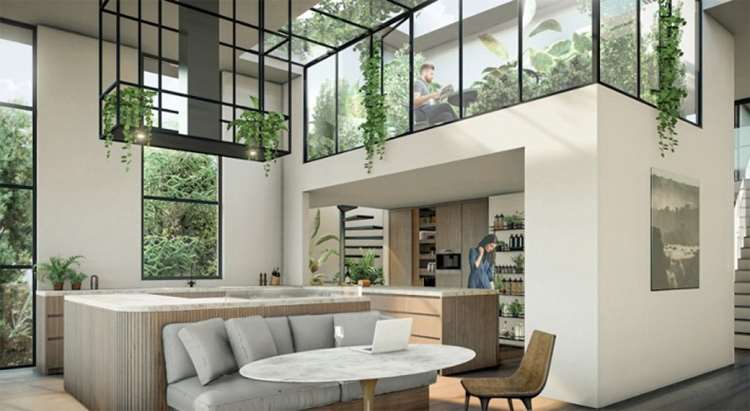

It has become the need of the hour to respond constructively to the aftermaths of the COVID-19 pandemic. The pandemic has become the right opportunity for architects to explore and incorporate suitable changes in their design practices. We all have been forced to readapt, refashion, recast and change what we have taken for granted in the built environment basis the restrictions that have been placed on us to safeguard us from the pandemic. The ‘New Normal’ is now the reality of our changed lifestyles which has been pushed to us during the outbreak of the Corona Pandemic.
None of us knows the future or how it will shape up for us all but we can examine trends, tactics and concepts that played huge roles during the pandemic. These trends can have long lasting impressions over the way our buildings are designed.People throughout the world are working from home due to the COVID-19 lockdown measures taken by the governments. In central business districts, large office buildings and skyscrapers have become deserted. Now that most companies are following the Remote Working Culture, they are also re-evaluating the need for such spacious and expensive office spaces. The newly accepted Remote Working culture would definitely cut costs; however, the absence of these offices is expected to be detrimental to surrounding businesses. A long-term reallocation of building usage in central business districts may therefore be forecasted.
Looking at the recent trends, most people who can afford to and work remotely are still confined to their homes and hence automobile usage has registered a sharp decline. As a result, the roads and highways see lesser traffic and ultimately greenhouse gas emissions have dropped. The impact on oil prices is also considerable. City planners are exploring to convert streets into walking and cycling-only zones. The great global crisis has affected the livelihoods of millions, however, the pandemic’s impact on the environment has been positive.
Current news reports suggest that, carbon emissions from the burning of fossil fuels are heading for a record 5.5-5.7% annual drop. Whether this global pandemic will become a catalyst for a sustained movement away from automobile reliance remains to be seen, but the circumstances surely offer a glimpse of a more pedestrian-friendly environment. Ideas for parks, which ensure maintenance of social distancing, must be developed, while allowing people to be outdoors. In future emergencies, parks like these are expected to offer spaces of refuge and serenity in urban areas.
New Buildings will be constructed keeping in mind the following:
Rising modular construction
The COVID-19 pandemic has highlighted the need to design and build fast, in situations of emergency. The healthcare industry continues to be overwhelmed and the demand for more facilities such as hospitals, quarantine centers, testing sites and temporary lodgings has never been so high. Given this rising demand and urgent need for these spaces, modular construction — the process where buildings are assembled through prefabricated modules — has to be innovated and made execution friendly. This building technique is fast, flexible and less wasteful than the traditional building technique.
Increasing Adaptive Reuse of Existing Structures
Adaptive Reuse of existing structures is another design approach that became popular during the pandemic and served the purpose. It is an efficient and sustainable approach to creating new spaces, especially for aging cities. It has proven to be very effective in creating emergency facilities along with modular construction methods.
Lightweight architecture – Newly Innovated
Since the onset of the pandemic, many companies have developed various architecture and design solutions that address the need for emergency facilities. Tent structures were built to serve as field hospitals and test centers in the time of need. Rapidly deployable, pop-up recovery unit, shipping containers were converted into bio containment pods, and modular critical care units that could be easily transported. The pandemic has made us all realize that the portability and ease of assemblage of lightweight architecture is perfect for a disaster and crisis situation.
Convertible building design
While it is not a new concept, the importance of adaptability has become increasingly evident during this pandemic. From creating makeshift emergency facilities to reorganizing one’s home, that’s better suited for working remotely or quarantining oneself, flexible design has proven to be convenient, functional and utilitarian. The building architecture is expected to include a series of adjustable walls and screens that can be used to segment an open-plan apartment. The future is uncertain and the Companies, residential house owners will want the ability to quickly modify and scale their workplaces and staying arrangements in case something similar were to happen again.
The dependency on staying at home is going to stay even after the pandemic is subsided. Our homes have begun to play larger and more important roles in our daily lives that they will need to adapt in order to entertain more activities and services.
Based on current trends and concepts that arose during the pandemic, a list may be put together of ways home designs may change following the COVID-19 pandemic:
1
2
3
4
5
6